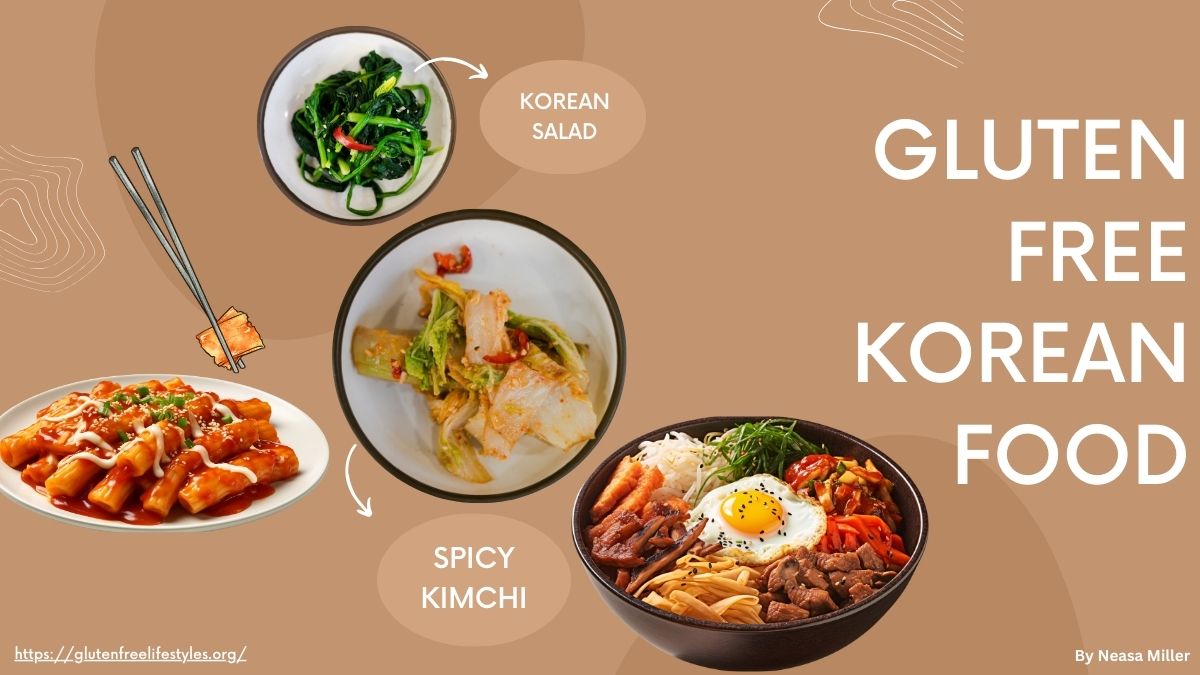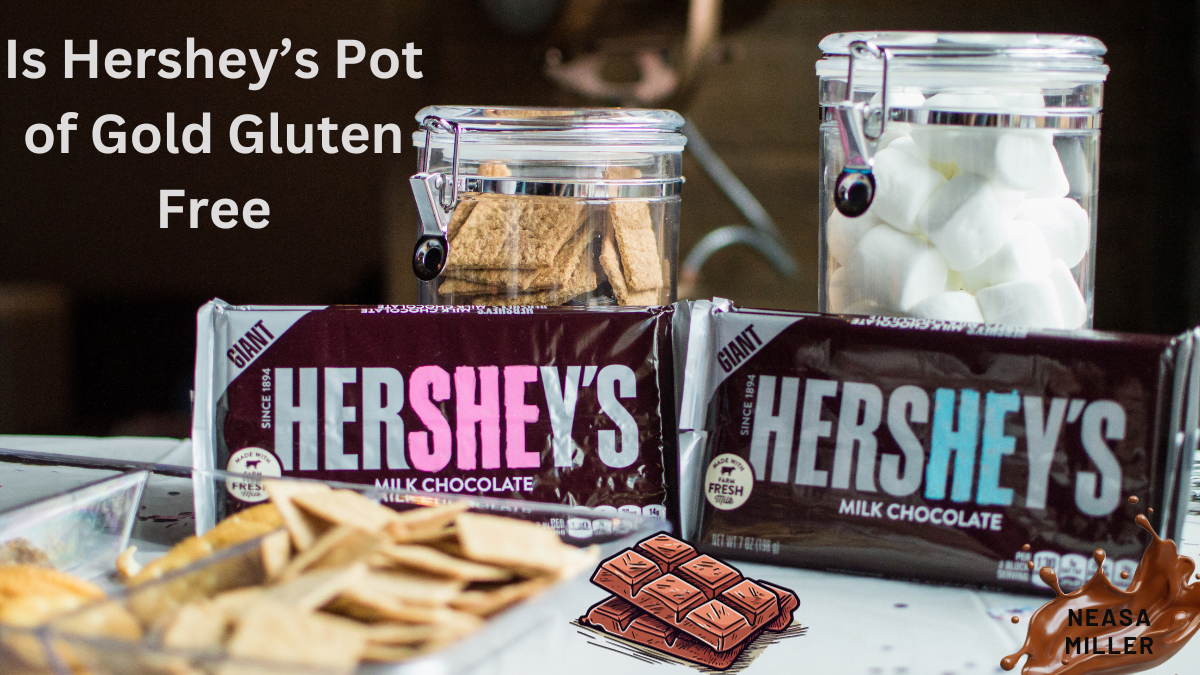Korean food has exploded in popularity worldwide, captivating hearts (and stomachs) with its bold flavors, colorful presentations, and emphasis on communal dining. But for those with gluten sensitivities or celiac disease, navigating this culinary adventure can be daunting. Fear not, intrepid eaters! This comprehensive guide unveils a treasure trove of delectable Korean dishes that are naturally gluten-free or can be easily adapted for your dietary needs.
Understanding Gluten in Korean Cuisine:
First, an overview of gluten. In wheat, barley, and rye, there is a protein complex called gluten. It’s what gives the crunch to pasta and the suppleness to bread. Gluten can be present in Korean food in a number of ways, including:
- Soy Sauce (Ganjang): A staple Korean condiment, most commercially produced soy sauces contain wheat during fermentation.
- Gochujang (Korean chili paste): While the core ingredients (chili peppers, soybeans, fermented rice) are gluten-free, some brands might use wheat flour as a thickener.
- Doenjang (Soybean Paste): Similar to gochujang, doenjang is primarily gluten-free but some variations might incorporate wheat flour.
- Processed Meats: Pre-marinated meats often contain wheat-based ingredients for flavor and texture.
Gluten-Free Korean Staples:
Let’s now explore the mouthwatering realm of gluten-free Korean cuisine!
- Bap (Rice): The foundation of Korean cuisine, good news – rice is naturally gluten-free! Steamed white rice (bap) is a constant companion to most Korean meals.
- Kimchi: This spicy fermented cabbage is a national treasure and conveniently gluten-free. Enjoy it alongside other dishes or indulge in kimchi jjigae (kimchi stew), a hearty and flavorful option.
- Jjigae (Korean Stews): Many traditional stews like doenjang jjigae (soybean paste stew) and sundubu jjigae (soft tofu stew) are built around a gluten-free base. However, be cautious of pre-made broths or added ingredients like dumplings that might contain wheat.
- Kongguksu (Soybean Noodle Soup): Thin, chilled noodles made from ground soybeans? Yes, please! This refreshing summer dish is a gluten-free delight.
- Gukbap (Korean Soups with Rice): Similar to jjigae, many Korean soups like seaweed soup (miyeokguk) and kimchi soup (kimchi jjigae) are gluten-free at their core. Just double-check with the restaurant about any hidden wheat ingredients.
Gluten-Conscious Twists on Korean Classics:
Several beloved Korean dishes can be enjoyed with slight modifications to ensure they’re gluten-free:
- Bibimbap (Mixed Rice Bowl): This vibrant dish with rice, vegetables, meat, and a fried egg is easily adaptable. Opt for a gluten-free gochujang or use a simple sauce of sesame oil, soy sauce, and vinegar. Skip marinated meats and processed ingredients.
- Gimbap (Korean Seaweed Rice Rolls): These delightful rolls typically contain rice, vegetables, and sometimes meat or fish. Avoid fillings with wheat flour, like imitation crab, and opt for a gluten-free dipping sauce.
- Korean BBQ: The smoky, sizzling joy of Korean BBQ can be enjoyed with a bit of caution. Most meats are naturally gluten-free, but be wary of pre-marinated options. Focus on unmarinated meats and inquire about gluten-free dipping sauces made with tamari (a gluten-free soy sauce) or simply sesame oil and salt.
Gluten-Free Korean Banchan (Side Dishes):
Banchan, the symphony of small side dishes that accompany Korean meals, offers a treasure trove of gluten-free options:
- Kimchi and Other Fermented Vegetables: Most fermented vegetables like kimchi, kkakdugi (radish kimchi), and napa cabbage kimchi are gluten-free.
- Japchae (Glass Noodle Stir-fry): This vibrant stir-fry with glass noodles made from sweet potato starch is naturally gluten-free. Just be mindful of any added sauces or ingredients.
- Dubu Jorim (Braised Tofu): Silken tofu braised in a savory sauce is a delightful side dish and entirely gluten-free.
- Sautéed Vegetables: An abundance of stir-fried or seasoned vegetables like spinach, green beans, and mushrooms are naturally gluten-free.
- Seaweed Salad (Miyeok Muchim): This refreshing salad of seaweed, vegetables, and sesame seeds is a healthy and gluten-free accompaniment.
Gluten-Free Korean Desserts
Even after a delightful savory meal, there’s always room for something sweet, and Korean desserts have some hidden gluten-free gems:
- Songpyeon (Rice Cakes): These colorful rice cakes, traditionally filled with sweet red bean paste or other fillings, can be made with gluten-free rice flour. Be sure to inquire about the specific flour used at restaurants.
- Hwajeong (Korean Pancakes): Delicate flower-shaped pancakes made with rice flour batter and filled with sweet red bean paste or fruit are a delightful and gluten-free dessert option.
- Yaksik (Korean Sweet Rice): This sticky rice dessert with chestnuts, jujubes, and pine nuts is naturally gluten-free and perfect for sharing.
- Bingsu (Shaved Ice with Sweet Toppings): Beat the heat with Bingsu, a refreshing shaved ice topped with sweetened condensed milk, fruit, and sometimes red beans. As long as there are no added barley ingredients (sometimes used as a thickener), it’s a gluten-free treat.
Dining Out with Confidence:
While navigating Korean menus can be tricky, here are some tips for a successful gluten-free dining experience:
- Learn some basic Korean phrases: Knowing keywords like “gluten-free” (gluten-people) and “wheat” (밀 gomi) can help you communicate effectively.
- Ask questions: Don’t hesitate to inquire about ingredients and preparation methods. Most restaurants will be happy to accommodate dietary restrictions.
- Carry a gluten-free card: Having a card translated into Korean that explains your dietary needs can be helpful for clear communication.
- Be prepared to make substitutions: Some dishes might require minor adjustments, and being flexible will open up your options.
Embrace the Gluten-Free Korean Adventure:
With a little planning and knowledge, exploring the vibrant world of Korean cuisine is entirely possible for those following a gluten-free diet. From savory stews to refreshing side dishes and delightful desserts, there’s a world of flavor waiting to be discovered. So, grab your chopsticks and embark on a delicious gluten-free Korean adventure!
Bonus Tips:
- Look for Korean restaurants that cater to health-conscious customers. They might be more likely to offer gluten-free options or have a better understanding of dietary restrictions.
- Explore Korean grocery stores. You might find various gluten-free Korean ingredients like tamari, rice noodles, and gluten-free gochujang.
- Consider cooking Korean food at home! This allows you complete control over the ingredients and ensures a delicious and safe gluten-free meal. There are many fantastic gluten-free Korean recipe resources available online.
By following these tips and embracing the exploration, you can unlock the hidden gems of Korean cuisine, savoring its unique flavors without compromising your dietary needs.



